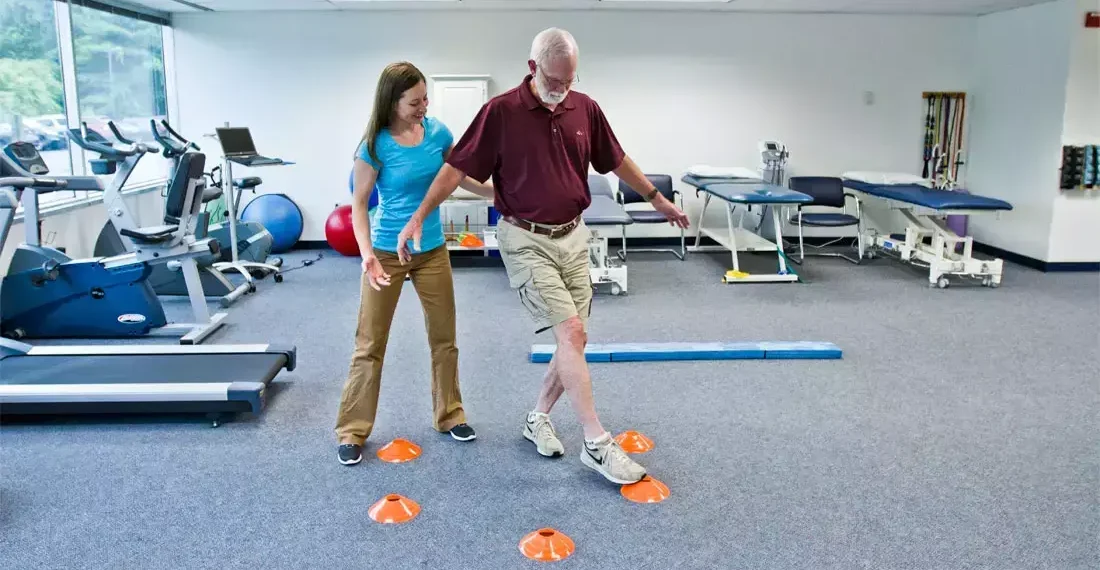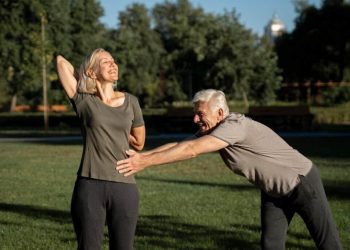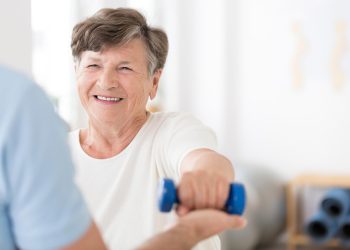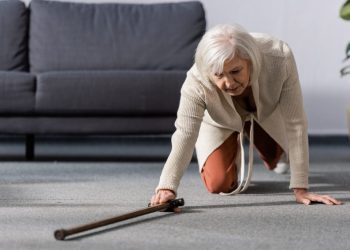Maintaining good balance is one of the most important aspects of healthy aging. As we grow older, changes in muscle strength, vision, inner ear function, and reflexes can affect our stability, increasing the risk of falls. However, the good news is that balance is a skill that can be improved at any age through consistent, targeted practice.
This comprehensive guide will walk you through safe and effective balance exercises, fall prevention strategies, and a progressive approach to building stability and confidence in your movements.
Why Balance Matters for Seniors
Falls are the leading cause of injury among older adults, but they are not an inevitable part of aging. According to health research, one in four Americans aged 65 and older falls each year, and many of these falls result in serious injuries. Beyond the physical consequences, falls can lead to a loss of confidence and independence.
Regular balance training can:
- Reduce fall risk by up to 40%
- Improve coordination and reaction time
- Strengthen the muscles that support stability
- Enhance spatial awareness and body positioning
- Boost confidence in daily activities
- Maintain independence and quality of life
Safety First: Before You Begin
Consult Your Healthcare Provider: Before starting any new exercise program, speak with your doctor or physical therapist, especially if you have a history of falls, dizziness, joint problems, or cardiovascular conditions.
Create a Safe Environment:
- Practice near a sturdy chair, counter, or wall for support
- Ensure adequate lighting in your exercise area
- Remove tripping hazards like loose rugs or clutter
- Wear non-slip, supportive footwear
- Never exercise when feeling dizzy or unwell
- Consider having someone nearby when first starting out
Foundation Balance Exercises for Beginners
1. Standing Weight Shifts
What it does: Improves side-to-side stability and strengthens hip muscles.
How to do it:
- Stand with feet hip-width apart near a sturdy support
- Slowly shift your weight to your right foot, lifting your left foot slightly off the ground
- Hold for 10-15 seconds
- Shift back to center, then to your left foot
- Repeat 5 times on each side
Tip: Keep your core engaged and maintain an upright posture throughout.
2. Single-Leg Stance
What it does: Builds foundational balance strength and ankle stability.
How to do it:
- Stand behind a chair, lightly holding the back for support
- Lift your right foot a few inches off the ground
- Hold this position for 10 seconds
- Return to starting position and repeat with the left foot
- Complete 5 repetitions on each side
Progression: As you improve, try using just one finger for support, then no support at all.
3. Heel-to-Toe Walk
What it does: Enhances dynamic balance and coordination.
How to do it:
- Position yourself near a wall or counter for safety
- Place your right foot directly in front of your left foot, so the heel of your right foot touches the toes of your left foot
- Take 10-20 steps forward in this heel-to-toe pattern
- Turn around carefully and return
- Repeat 3 times
Tip: Look straight ahead rather than down at your feet to challenge your balance further.
4. Sit-to-Stand Exercise
What it does: Strengthens legs and core while practicing a functional movement.
How to do it:
- Sit in a sturdy chair with your feet flat on the floor
- Cross your arms over your chest or keep them extended forward
- Lean slightly forward and stand up without using your hands
- Slowly lower yourself back down to sitting
- Repeat 10 times
Progression: Use a higher seat initially if needed, then progress to lower chairs.
Intermediate Balance Exercises
Once you can comfortably perform the foundation exercises without support, progress to these more challenging movements.
5. Clock Reach Exercise
What it does: Improves multi-directional balance and challenges stability in different planes of motion.
How to do it:
- Stand on your left leg with your right leg slightly lifted
- Imagine you’re standing in the center of a clock
- Reach your right arm toward 12 o’clock, then 3 o’clock, then 6 o’clock
- Return to center between each reach
- Complete 5 full rotations, then switch legs
6. Tandem Balance
What it does: Challenges narrow base of support stability.
How to do it:
- Stand with one foot directly in front of the other (heel touching toe)
- Hold this position for 30 seconds
- Switch feet and repeat
- Complete 3 repetitions on each side
Progression: Try this with eyes closed for an advanced challenge (only if safe to do so).
7. Side Leg Raises
What it does: Strengthens hip abductors crucial for lateral stability.
How to do it:
- Stand behind a chair for light support
- Keep your standing leg slightly bent
- Lift your right leg out to the side, keeping your toe pointed forward
- Hold for 2-3 seconds at the top
- Lower slowly and repeat 10 times
- Switch legs
8. Back Leg Raises
What it does: Strengthens glutes and lower back muscles.
How to do it:
- Stand behind a chair holding on for support
- Slowly lift your right leg straight back, keeping your knee straight
- Hold for 2-3 seconds
- Lower and repeat 10 times
- Switch legs
Important: Don’t arch your back or lean forward; keep your upper body upright.
Advanced Balance Challenges
For those who have mastered intermediate exercises, these advanced movements provide continued progression.
9. Single-Leg Stance with Arm Movements
How to do it:
- Stand on one leg without support
- Raise your arms overhead, then out to the sides, then forward
- Hold each arm position for 5 seconds while maintaining balance
- Complete 5 repetitions, then switch legs
10. Balance Walk with Head Turns
How to do it:
- Walk in a straight line at a normal pace
- Turn your head to look right, then left, as you walk
- Continue for 20 steps
- This challenges your vestibular system (inner ear balance)
Essential Fall Prevention Strategies
Balance exercises are just one component of fall prevention. Consider these comprehensive strategies:
Home Safety Modifications:
- Install grab bars in bathrooms
- Ensure adequate lighting throughout your home, especially stairways
- Secure loose carpets or remove them entirely
- Keep frequently used items within easy reach
- Consider a raised toilet seat
- Use non-slip mats in the bathroom
Vision and Hearing Care:
- Have regular eye examinations
- Update eyeglass prescriptions as needed
- Ensure good lighting for tasks
- Address hearing problems, as they can affect balance
Medication Management:
- Review medications with your doctor regularly
- Be aware of side effects that may cause dizziness or drowsiness
- Take medications as prescribed
Footwear Matters:
- Wear supportive, non-slip shoes
- Avoid walking in socks or loose slippers
- Replace worn shoe treads
Physical Health:
- Maintain adequate vitamin D and calcium intake for bone health
- Stay hydrated
- Address any underlying medical conditions affecting balance
Progression Guidelines and Training Schedule
Start Slowly: Begin with foundation exercises, practicing 3-4 times per week for 10-15 minutes per session.
Progress Gradually: Spend 2-4 weeks at each level before advancing. Signs you’re ready to progress include:
- Completing exercises without wobbling
- Feeling confident and comfortable
- Maintaining proper form throughout
Listen to Your Body: Mild muscle soreness is normal, but sharp pain or dizziness means you should stop and consult a healthcare provider.
Consistency is Key: Regular practice is more important than intensity. Even 10 minutes daily is better than one long session weekly.
Sample Weekly Schedule:
- Monday: Foundation exercises (10-15 minutes)
- Tuesday: Walking practice with balance challenges
- Wednesday: Rest or gentle stretching
- Thursday: Intermediate exercises (10-15 minutes)
- Friday: Functional movements (sit-to-stand, heel-to-toe walk)
- Saturday: Combined routine
- Sunday: Rest or recreational activity (gardening, gentle yoga)
Additional Activities That Improve Balance
Consider incorporating these complementary activities:
Tai Chi: This gentle martial art is specifically proven to reduce fall risk in seniors and improve balance, flexibility, and mental well-being.
Yoga: Many poses improve balance, strength, and body awareness. Look for senior-specific or chair yoga classes.
Dancing: Social dancing improves balance while providing enjoyment and social connection.
Walking: Regular walking, especially on varied terrain, challenges balance naturally.
Water Exercise: Aquatic activities provide resistance and balance training with reduced fall risk.
Warning Signs to Watch For
Stop exercising and seek medical attention if you experience:
- Sudden dizziness or vertigo
- Chest pain or shortness of breath
- Severe joint or muscle pain
- Numbness or tingling in extremities
- Vision changes or seeing spots
Staying Motivated
Set Realistic Goals: Track your progress by noting how long you can hold balance positions or how many repetitions you can complete.
Find a Partner: Exercise with a friend for safety, accountability, and social enjoyment.
Celebrate Progress: Acknowledge improvements, no matter how small. Better balance in daily activities like reaching for items or navigating stairs is a victory.
Join a Class: Many community centers, senior centers, and gyms offer balance-specific classes, providing professional instruction and social interaction.
Improving balance is an investment in your independence, confidence, and quality of life. While the risk of falls increases with age, it’s never too late to take action. By consistently practicing these exercises, making your environment safer, and maintaining overall physical health, you can significantly reduce your fall risk and enjoy greater stability in all your daily activities.
Remember, progress takes time, and everyone improves at their own pace. Start where you are, be patient with yourself, and celebrate each small victory along the way. Your future self will thank you for the effort you put in today.
Always consult with healthcare professionals before beginning any new exercise program, and consider working with a physical therapist to develop a personalized balance training plan tailored to your specific needs and abilities.
- what is tai chi walking for senior balance
- tai chi for senior balance
- practical balance exercises
- fall prevention through balance
- gentle balance exercises for elderly
- senior fitness for balance
- mobility and balance for seniors
- coordination for senior balance
- active aging balance exercises
- low-impact balance training






